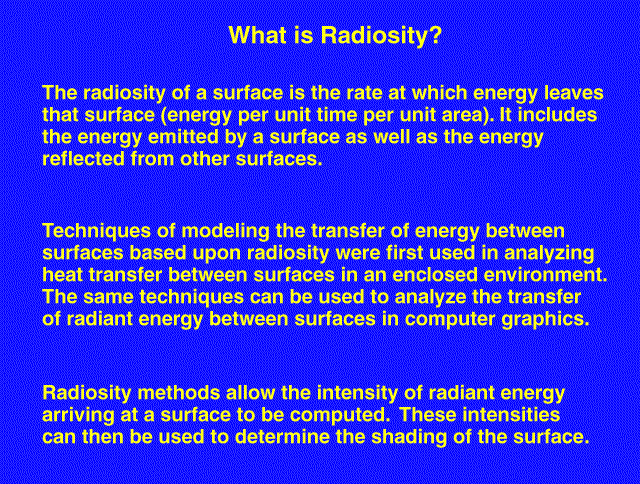
This 'thermal radiation' theory can be used to describe the transfer of many kinds of energy between surfaces, including light energy.
As in thermal heat transfer, the basic radiosity method for computer image generation assumes that surfaces are diffuse emitters and reflectors of energy, emitting and reflecting energy uniformly over their entire area. It also assumes that an equilibrium solution can be reached, such that all of the energy in an environment is accounted for, through absorption and reflection.
The basic radiosity method is viewpoint independent. The distribution of energy in the scene is the same regardless of the viewpoint of the image.